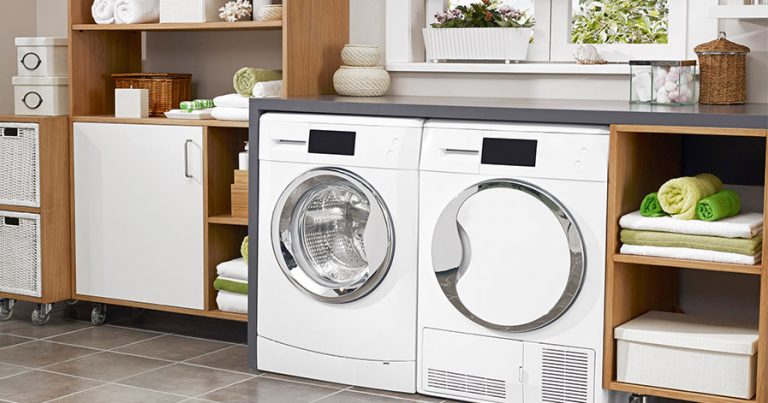Keep Your Coffee Strong With These 7 Keurig Cleaning Tips
How to Clean a Keurig Coffee Maker
Many people regard their Keurig coffee maker as one of their most important appliances. If you are one of these people, you need to give it the attention it deserves. If your machine is dirty, bacteria could be present in your next cup of coffee, so here’s how to clean a Keurig coffee maker.
Your coffee maker is not likely to harbor as much bacteria as other items, like a kitchen sponge, but any warm, damp environment is conducive to the growth of bacteria. At the very least, mineral buildup can become an issue and affect the performance of your coffee machine and prevent you from getting the full flavor of your coffee. If you want your coffee to always taste its best, you need to know how to clean your Keurig thoroughly.
Supplies for Cleaning Your Keurig
The supplies you need to clean your Keurig coffee maker include:
- A large ceramic cup
- A non-abrasive cloth
- Dish soap
- A descaling solution (vinegar can do the trick)
- A small cleaning brush (like a toothbrush)
- A clean paperclip with one side straightened
Step 1: Clean Detachable Components
You do not want to risk being electrocuted or damage the electronics of the machine, so your first step is to unplug your Keurig. Now, remove the various detachable components, such as the water reservoir and its lid, the drip tray and drip tray plate, as well as the K-cup holder.
Wash all of these components in your kitchen sink with warm, soapy water and leave them to dry while you continue the cleaning process. Don’t dry the inside of the water reservoir with a cloth, as lint could be left behind.
Step 2: Wipe Down the Surfaces
Take a wet paper towel or a washcloth and wipe down the whole Keurig machine. It can collect quite a bit of dust over time, especially if it is used in a busy office setting. You should not immerse your brewer in water or any other liquids.
Step 3: Thoroughly Clean All the Crevices
Grime can easily build up in the crevices of your machine and getting rid of it can improve durability and performance. Use a small cleaning brush, like a toothbrush, and work it into a well-lit place. You do not want to use soapy water at this stage, as it may be hard to remove and can affect the taste of your coffee.
Step 4: Clean the Brewer Needles
If you are experiencing inconsistent brews, there may be coffee grounds stuck in your brewer’s entrance and exit needles. These needles poke into the K-cup for the water and coffee to pass through.
This Keurig video explains where to find and how to clean the entry and exit needles. You insert a pin or paperclip into the tube on the underside of the pod holder to clean the exit needle, moving it around to remove any blockages.
The two side holes of the entrance needle are located under the brewer head and you once again insert your paperclip and move it around to loosen and remove particles. When your needles are clean, your brews will be consistent.
Step 5: Use Vinegar
Unfortunately, there are components that are out of your reach and you do not want to have to dismantle your whole machine. Vinegar is cheap and acidic, and effectively removes scale buildup. Reassemble your machine and fill the reservoir halfway to the top with white vinegar. Fill it up with water. Place a mug on the drip tray and run the brew cycle, discarding the hot vinegar in the mug.
Don’t use a K-cup when running a cleansing brew. Repeat until the reservoir is empty. If your Keurig is still in good shape, one reservoir is enough, but if not, two reservoirs may be necessary to fully descale it.
Keurig does sell a descaling solution, but many people use white vinegar because it is cheaper, and it will not damage your machine. Some people complain that the citric acid used as the active ingredient in the Keurig solution lingers and affects the taste of the coffee.
Step 6: Wash Out the Vinegar
There are those who recommend that you allow your Keurig machine to stand for four hours without rinsing it out, so any vinegar left in it can deal with remaining stubborn deposits. After this, rinse out the reservoir and fill it up again with fresh water. Run cycles of water until you can no longer smell vinegar. After this, your scale problems should be over and the performance of your Keurig machine should improve.
Step 7: Keep This Routine
Keurig recommends that you descale your coffee machine at least once every three to six months. More recent models will alert you when it is time to descale.
Other Tips for Cleaning Your Keurig
While the main steps are outlined above to clean your Keurig coffee maker, here are some tips to keep in mind for the cleaning process:
- If you have hard tap water, it is likely to cause more problems than soft water. You may want to use bottled water instead of tap water to prevent problems. The Keurig website recommends using bottled or spring water and not softened or distilled water.
- Some models have water filters that are part of the water reservoir. In such a case, you will need to replace the cartridge after about 60 or so tanks. Filters can improve taste and make clogging less likely.
- If you want to prevent bacteria growth in the reservoir, do not leave water in it when you are not using the machine, such as when you are going on vacation for a week or so.
- If you brew something sweet in your machine, like hot chocolate, run a cycle of plain water afterwards to make sure all the leftover sugar is cleaned out.
A Final Word
Give your Keurig a little attention every day, even if it is a quick wipe down with a wet cloth. If you give it a deep clean every three months, you will certainly be doing a lot more than most. This will help to make sure that you do not run into issues and have to go without that crucial morning cup of coffee.

